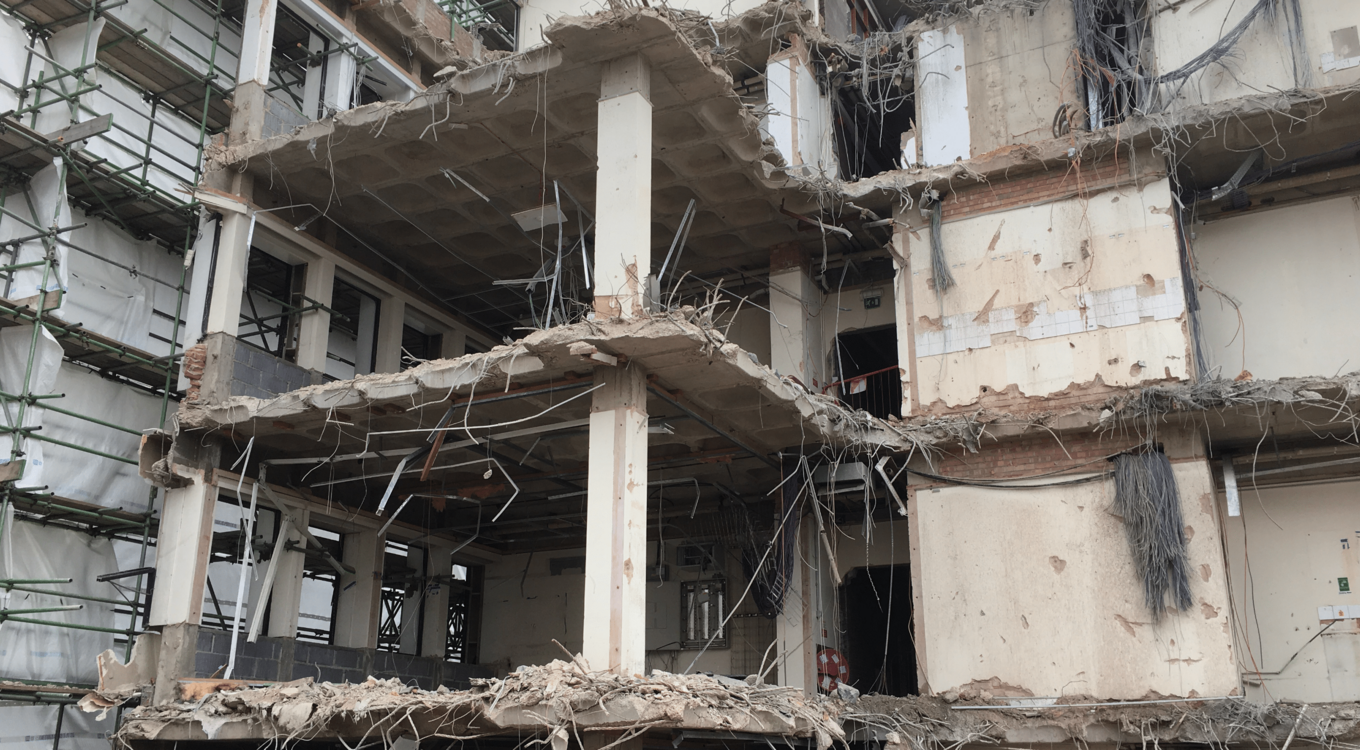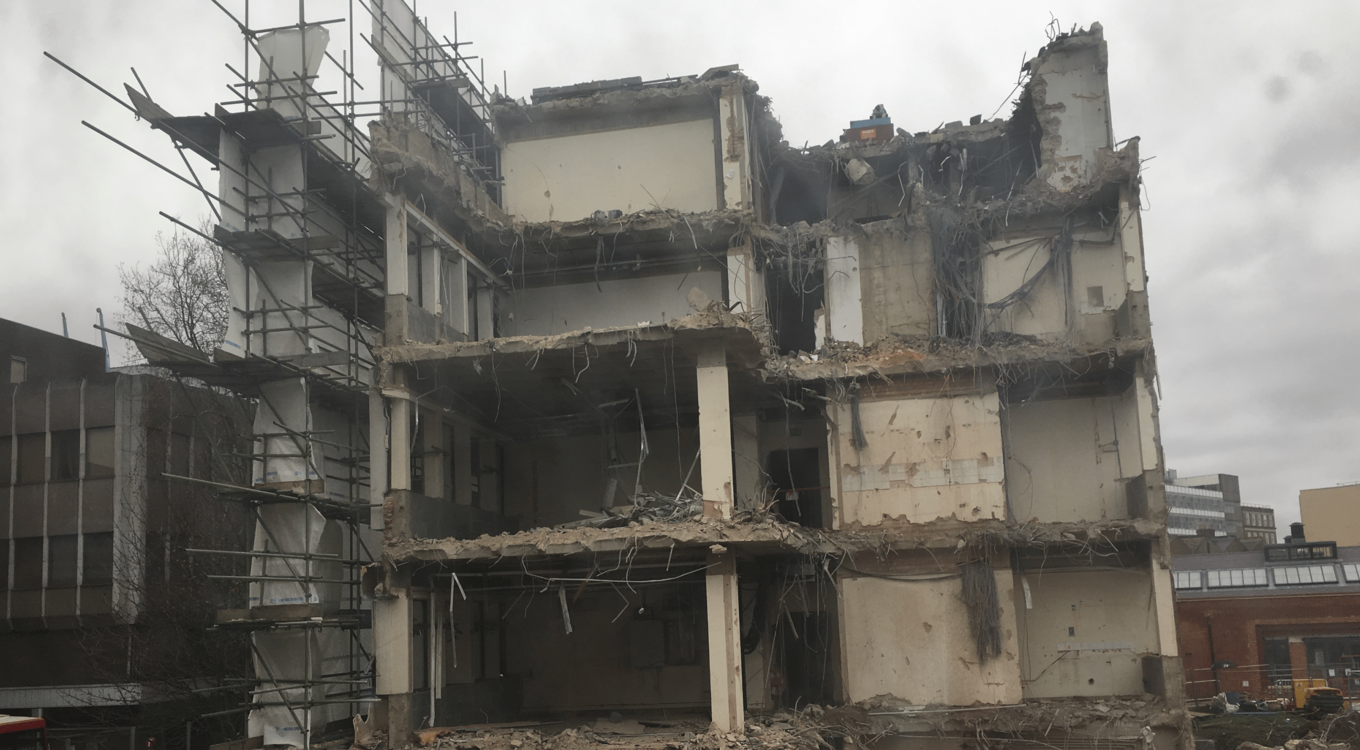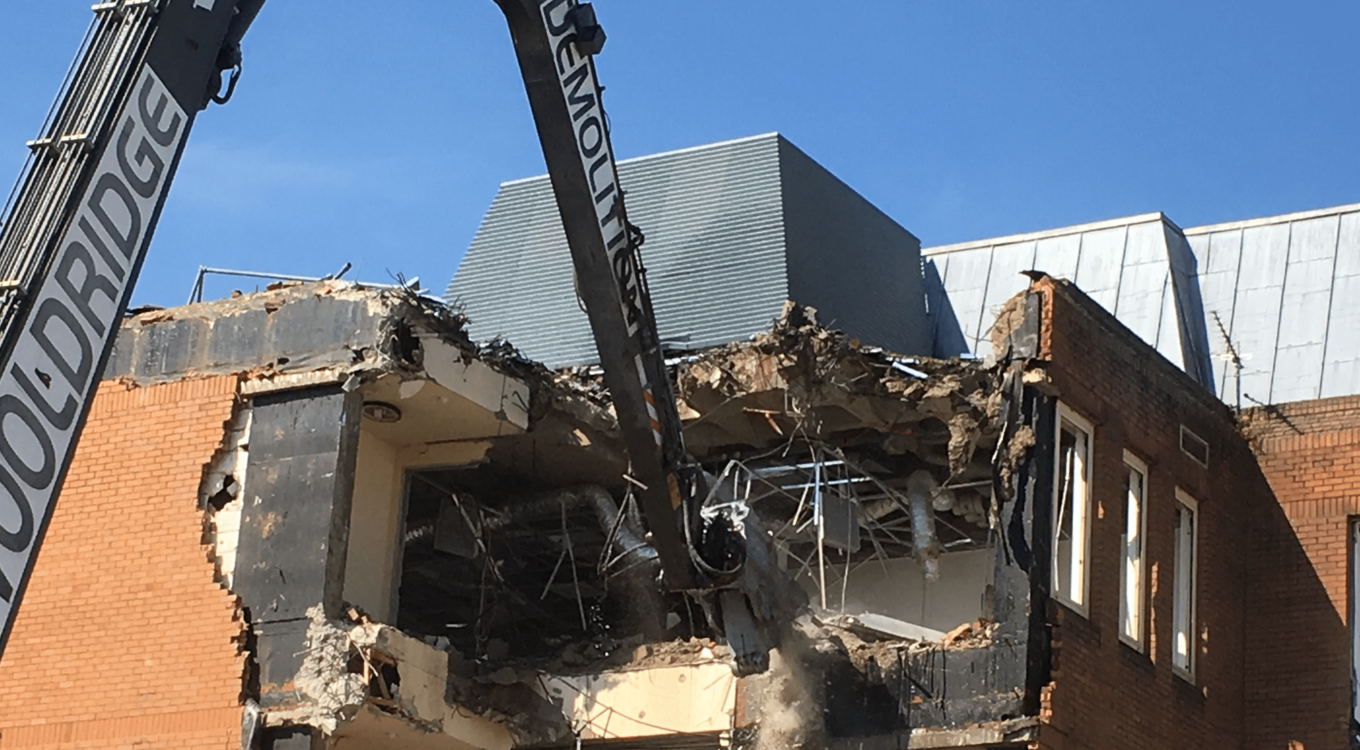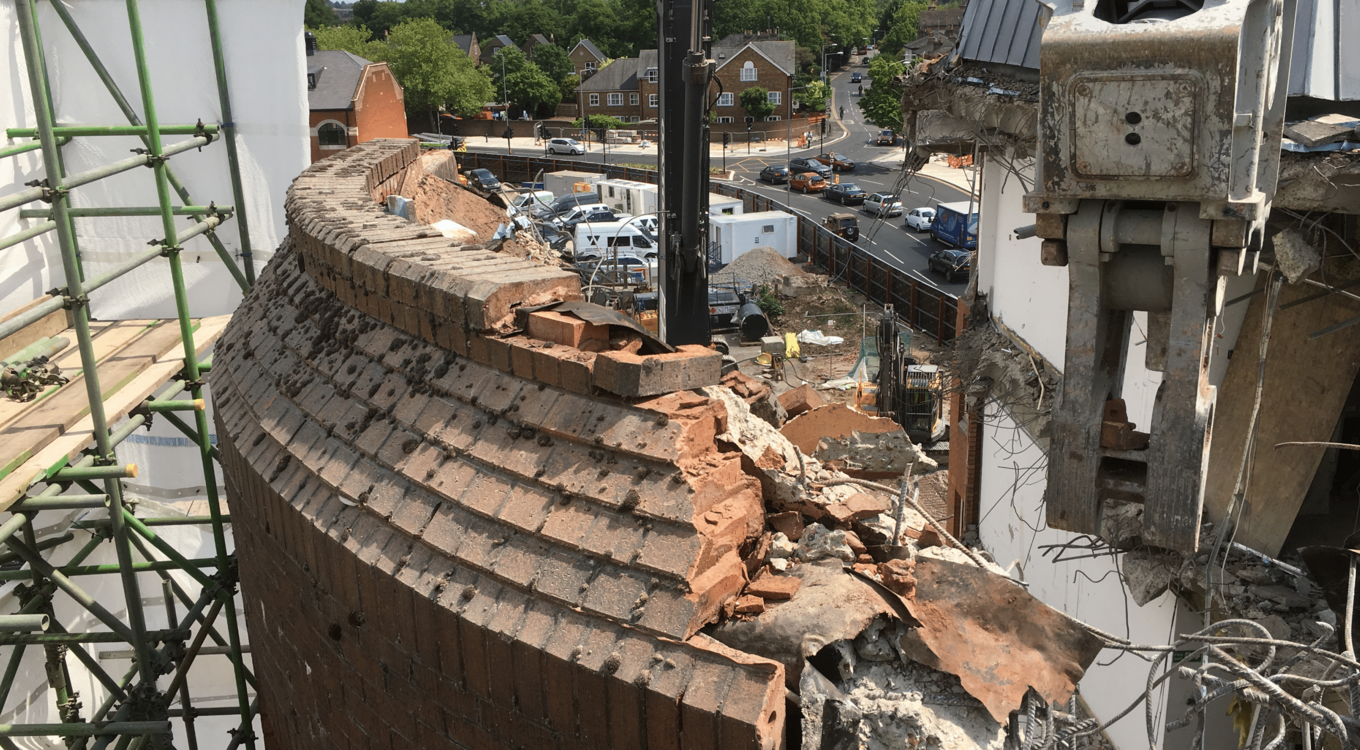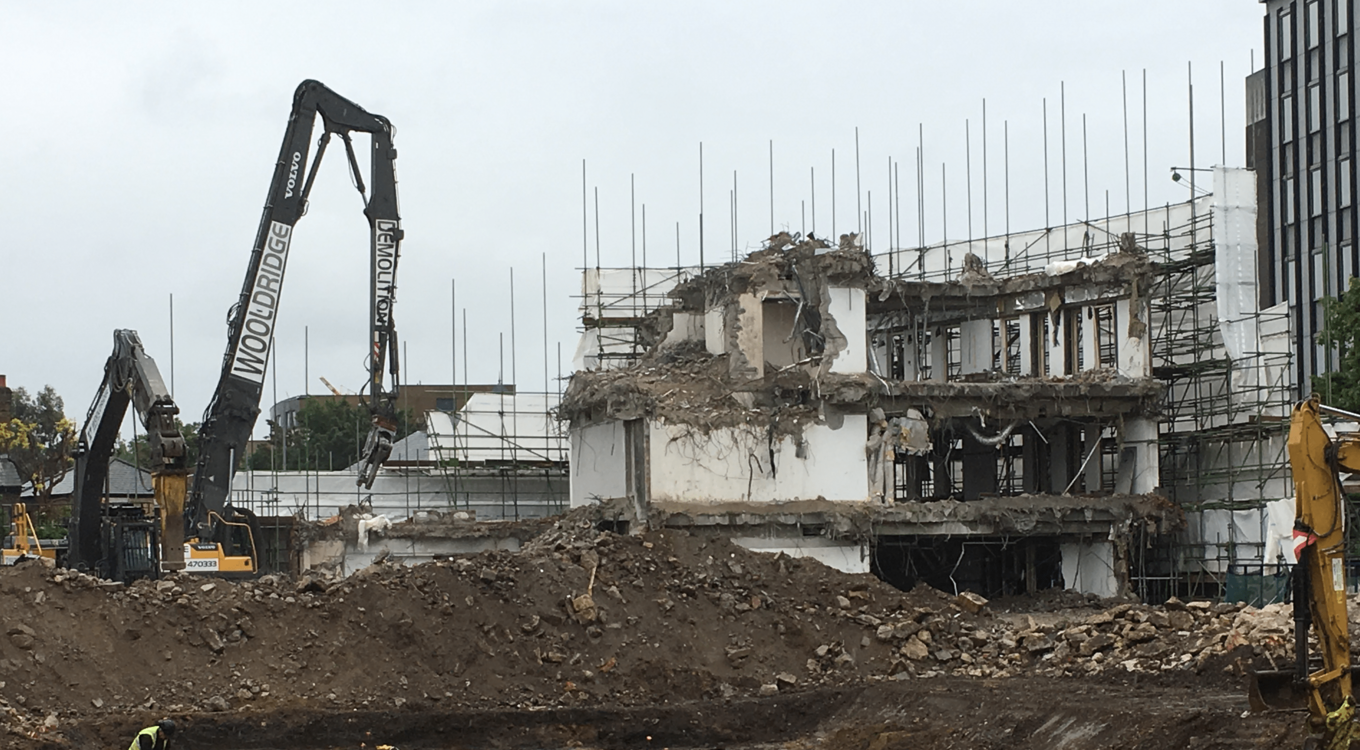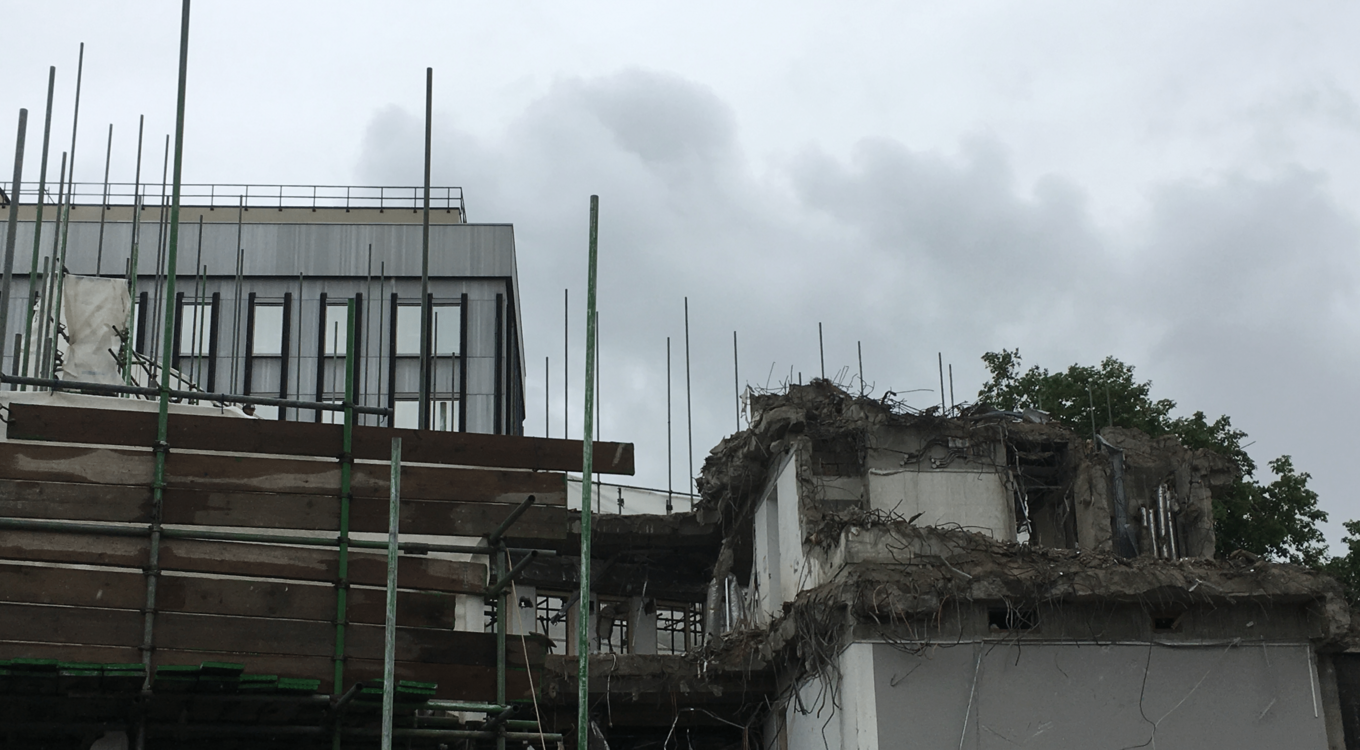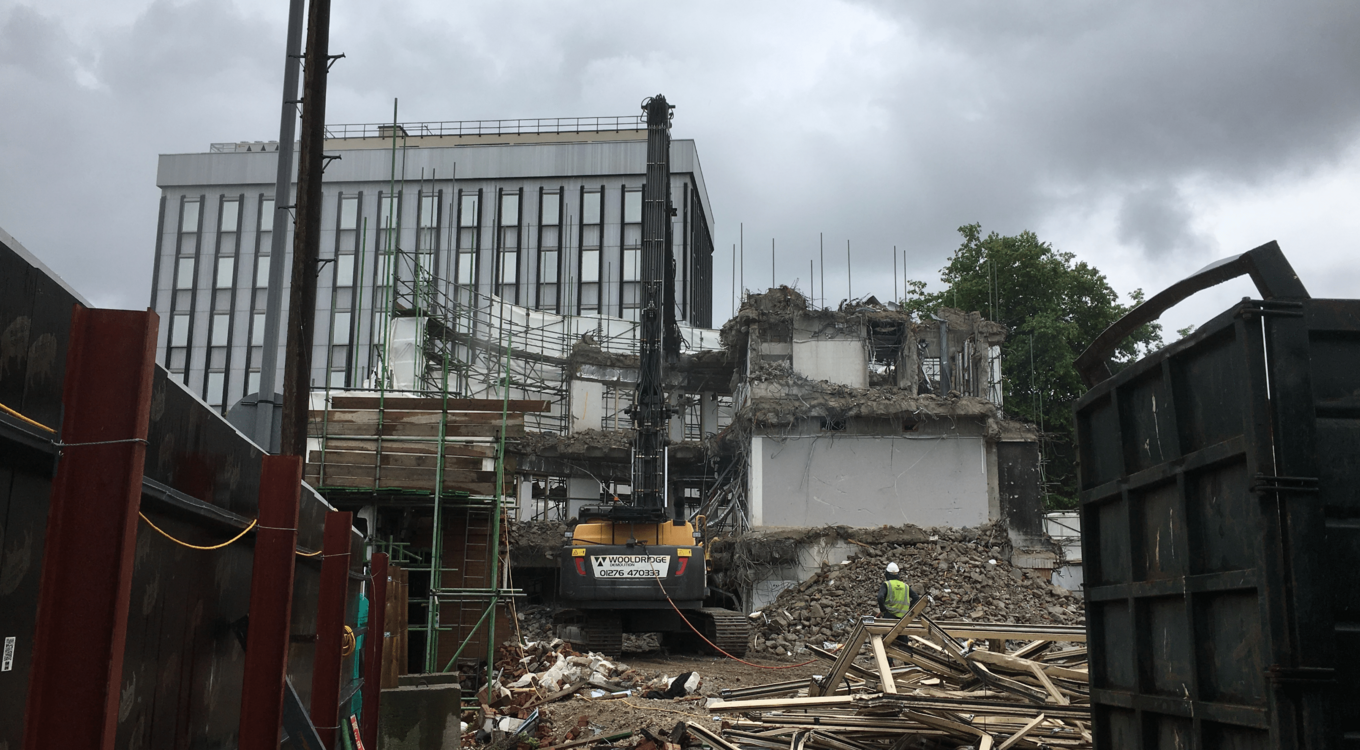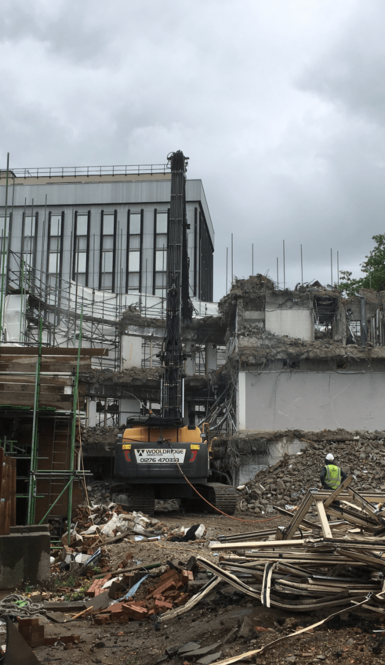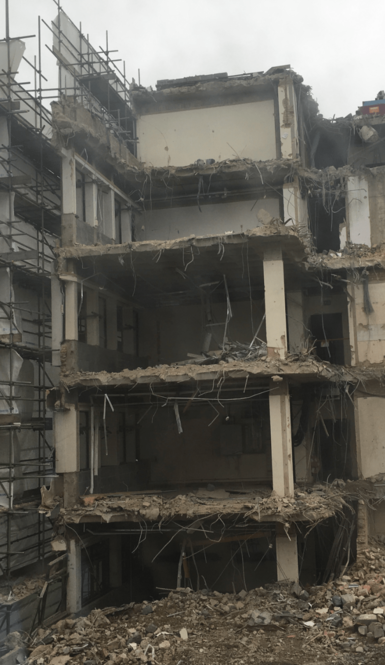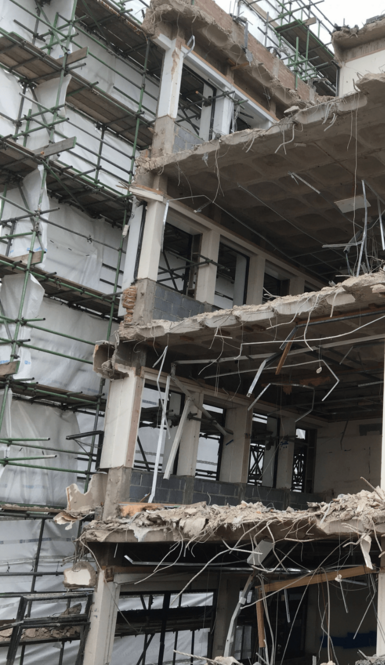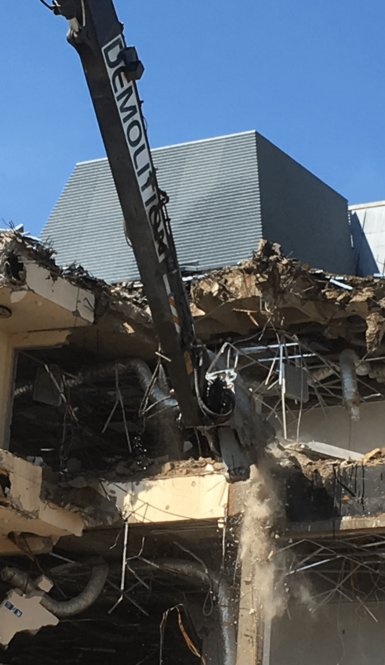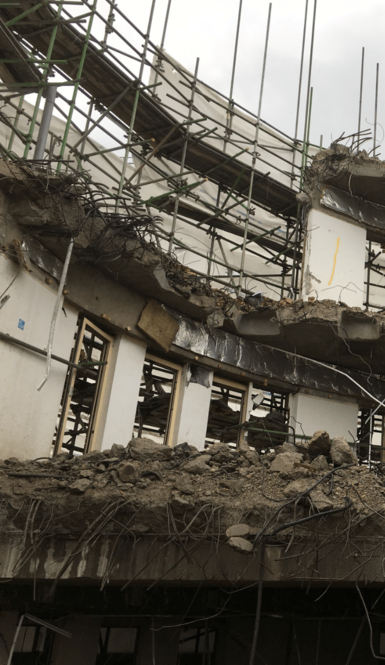- ClientSt. George (part of the Berkeley Homes Group)
- Date2018
- RoleDemolition Consultant and CDM Advisor
- TeamStephen McCann
We worked for St. George (part of the Berkeley Homes Group) on the demolition of the former Connexions Centre building and surrounding structures as part of the Royal Exchange development in the Royal Borough of Kingston, Greater London.
The contract involved the demolition of the concrete-built former Connexions Centre Kingston building named Brook House on 23 Brook Street, a five-storey office block made of a concrete frame with concrete floors and a concrete roof. The external elevations were a combination of brickwork, concrete panel, and glazing.
The three-storey Frances House building was constructed from a concrete frame, concrete floors, and a timber roof covered in slates and was clad in brick walls. The structure fronted onto the very busy Wheatfield Way.
The four-storey Argyll House was constructed from a concrete frame, concrete floors, and a timber roof covered in slate and was clad in brick panel walls. The structure cornered onto Wheatfield Way and Brook Street.
The demolition methods were a mixture of piecemeal method, hand demolition, and progressive fragmentation using a high-reach demolition rig from a safe working distance, clearing and processing the demolition arising materials to reduce level dig and clear the site to a clean and level finish.
Site overview video:
We first met with the development team and walked the site, produced a feasibility study for the contract outlining potential methods of demolition for each of the structures and offered the pros and cons of each method and our conclusion for the safest and most efficient method for the contract.
Once we were appointed as the demolition consultants for the project, we first assisted with the selection of the demolition contractors' tender list to ensure all bidding contractors are capable of delivering the job to high standards. Then we attended the pre-appointment tender bid meetings with the client and provided feedback on the bidding contractors. After careful consideration based on the quality of the submissions, we ranked the bidders and advised on the selection of the contractor.
Once the demolition contractor was appointed and the contractor’s Construction Phase Plan (CPP) was completed, we reviewed the plan and the Risk Assessment and Method Statement (RAMS) for the project and continually commented on the revisions and updates of both sets of documents for the duration of the contract.
Throughout the duration of the project, we carried out monthly audits, which were planned to coincide with the specific phases of the project, including the initial CDM compliance audit and monthly specific demolition process audits.
- Carry out a site visit and produce a feasibility study for the contract.
- Produce the Pre-Construction Information.
- Produce the Designer Key Hazards.
- Carry out a Pre-Demolition BREEAM survey.
- Consult on the tender list.
- Attend the bid meetings and provide feedback on the submissions.
- Review and comment on the Construction Phase Plan and issue a report.
- Review and comment on the Risk Assessments and Method Statement and issue a report.
- Review and comment on the asbestos Plan of Works and issue a report.
- Carry out the pre-start site audit and issue a report.
- Carry out monthly site audits and issue a report on the progress.
- Carry out the completion site audit and issue a report.
- Ensure the completion of the Health & Safety File.
Need some health and safety advice?
Book a free no-obligation consultation with one of our Health & Safety consultants today


 Pricing Plans
Pricing Plans

